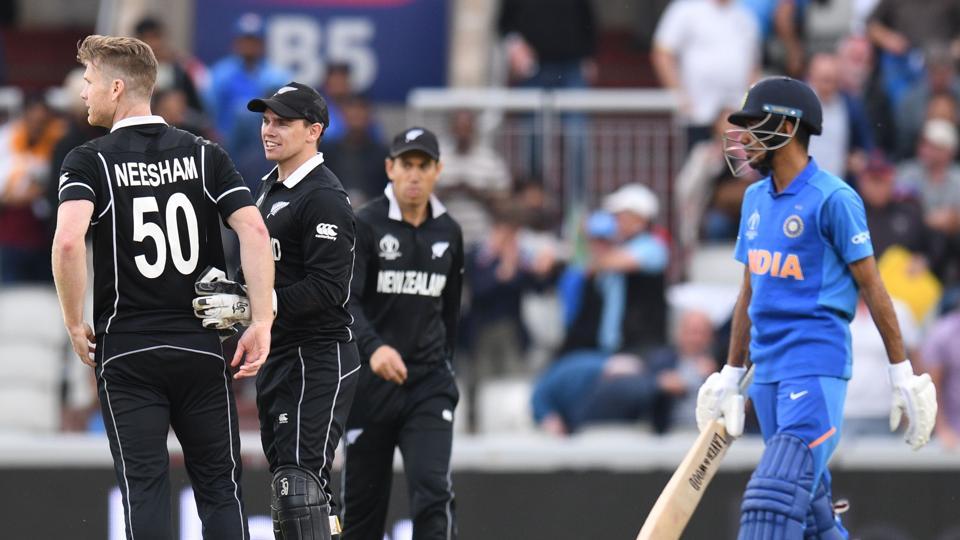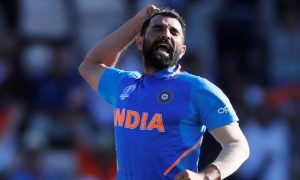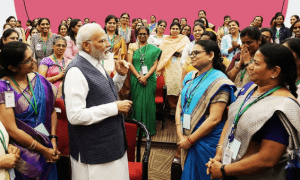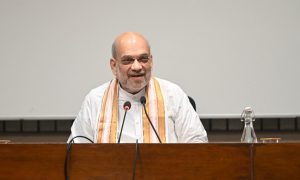On the way to Edgbaston cricket ground for the second semi-final, my Indian taxi driver never stopped shaking his head disbelievingly. “How could they not make it to the final?’’ he asked, echoing the sentiments of many people back home.
Where and how could India go wrong?
They had the tournament’s best batsman in Rohit Sharma, arguably the best bowler in Jasprit Bumrah; Virat Kohli and K L Rahul were in fine nick and M S Dhoni—even with his somewhat patchy batting form—had a wealth of experience that few players in the tournament possess.
These were the leading stars (plus the injured Shikhar Dhawan) when the team had embarked on its campaign. The support cast, if not quite possessing the same attributes, had acquitted themselves well too, despite the misgivings of sceptics.
Heading into the semi-final, India also had the best win record, having lost only one game.
In contrast, New Zealand had had three successive defeats. Not unnaturally, the other teams making it to the play-offs wanted to play the Kiwis in the semis. When Australia were unexpectedly beaten by South Africa in the last league match, the Indians were obviously delighted. On paper, empirical evidence, and the estimation of pundits, there could be only one outcome to their semi-final against New Zealand.
Which brings us back to the original question: where and how did India go wrong? I have no definitive answer, so I’ll take refuge in a cliché: New Zealand was simply the better team on the day.
This is neither sophistry nor a cop out, as some might allege. Rather, acknowledgment of the uncertainty and unpredictability that makes sport (and not just cricket) glorious.
There is a string of examples that can be given of mighty upsets across sports. Suffice, however, to remember that India’s triumph in the 1983 World Cup came against heavy odds because everything fell into place on June 25.
A few months later, the West Indies toured India and blanked Kapil Dev’s team in the ODI series. That, however, could not dilute the importance and impact of India winning the World Cup.
Conversely, if India and New Zealand were to play 10 ODIs from here, Kohli & Co will likely win 8. But that will not alleviate the disappointment in the team of losing this semi-final, and a chance at enduring glory.
What does being ‘better on the day’ mean?
In team sports—particularly in the limited overs variety, where cricket is concerned—moments of ‘magic’ by the underdog can have a very strong bearing on the result, in spite of the might of the opposition.
Think 1983 World Cup final again, and Balwinder Sandhu’s dream ‘banana’ in-swinger to Gordon Greenidge, Kapil’s extraordinary catch to dismiss danger man Viv Richards; or the 2007 T20 World Championship when Dhoni gave Joginder Sharma the last over to bowl.
There was nothing negative about India’s performance in the semi-final. The deep ambition to win despite being in the doldrums after the top order had been wiped out was evident as India fought back admirably through Jadeja and Dhoni where most teams would have folded up swiftly.
But the ‘magic’ moments belonged to New Zealand: Matt Henry’s testing, skillful opening spell where he got late swing at hostile pace to send India’s openers back to the dressing room; followed by Neesham’s spectacular catch at gully-point to dismiss Karthik, the best of the tournament. Guptill provided perhaps the most compelling, match-defining moment when he ran out Dhoni with a missile-like throw, sighting only one stump.
In sport, the difference between victory and defeat is often thinner than a coat of paint. As Kohli put it, 45 minutes (I’d actually say no more than 15) of poor play cost India the match and possibly also the title. With the perfect ending in sight, the script suddenly went horribly wrong.
Yet, that can’t blight the high-octane, highly entertaining campaign of Kohli and his team, who had the entire cricket world in thrall with their talent and spirited performances.
That said, it is pertinent to acknowledge the Kiwis for their achievement. A country with a population of less than 5 million and a sparse talent pool in cricket, has reached the World Cup final for the second successive time.
Whatever the outcome of Sunday’s final, this bunch of hardy cricketers, led by an understated but ambitious (and astute) captain in Williamson, deserve a standing ovation and a ‘hat tip’.




























 WhatsApp us
WhatsApp us